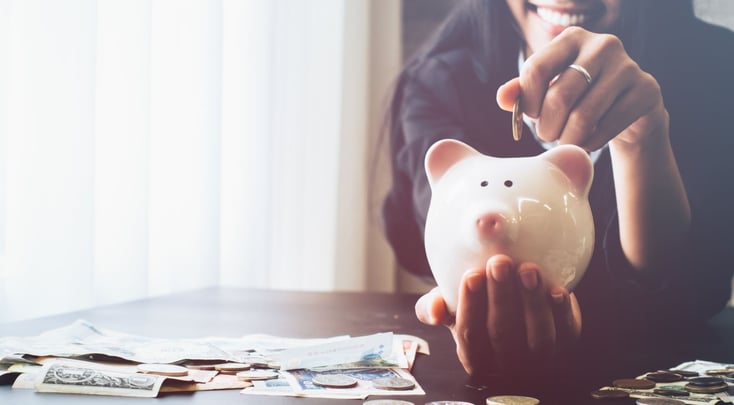What Is Microsaving?
Why does it matter?

There are many ways to save money, but one that has really caught on over the past few years is known as microsaving. To put it simply, microsaving is when you save tiny amounts of money—usually less than a dollar—over and over again. No single savings transaction seems large or important, but over time, your savings contributions add up to be pretty substantial.
You can use microsaving to painlessly achieve your financial goals, whether your goal is to accumulate an emergency fund or set money aside for a vacation. Keep reading for a closer look at this saving strategy and how it works.
What are some top ways to microsave?
Most people these days rely on technology to help them with microsaving, but there are ways to microsave with cash, too. Here are three top approaches to consider.
- Rounding Up Purchases
Some banks have a setting that allows you to automatically round up each purchase, contributing the extra change to a separate account. For example, if you buy milk for $2.36, your bank will deduct $3 from your checking account. They'll pay $2.36 to the vendor, and move the remaining $0.64 to your savings account. Virtually every time you make a purchase, you'll be saving money.
- Recurrent Automatic Transfers
If you want to have a little more control over the amount of money you save, you could set up your own automated, recurrent transfers from your checking account to a savings account. You can make these transfers as small or as large as you like. For instance, you could set up a $1 transfer to take place every Monday, Wednesday, and Friday.
- Saving $1 Bills
Tossing all of your change in a jar is one way to microsave in cash. If you make a lot of cash transactions, you may also want to try hanging on to all of your $1 bills. Each time you get a $1 bill, stuff it in an envelope. Once a month, go deposit all of those bills in the bank.
The Benefits of Microsaving
One key benefit of microsaving is that it is approachable. The idea of saving $500, for example, may seem overwhelming. But the idea of setting aside a few extra cents when you shop sounds very reasonable.
Microsaving keeps you working towards your goals, even if at times, you are only working slowly. It's better to save a few dollars a week than nothing at all! It's also motivating for you to keep seeing that savings account grow. After a few months of microsaving, you may feel more confident in your ability to save overall, which could lead you to pursue even bigger savings goals.
Tips for Microsaving
One key to success with microsaving is not to overthink it. This is meant to be a simple approach to saving money. You don't need to spend hours calculating exactly how much to save, or when.
Check your savings account once a month. This is just often enough to keep a general eye on how things are progressing. However, it's infrequently enough that you'll be pleasantly surprised to find out how much your account has grown. The first time you contribute $50 or $100 to savings over the course of the month without even realizing it, you'll start recommending microsaving to all of your friends.
If you are new to saving money or find saving challenging, try microsaving. It's simple, painless, and the money really does add up over time. You can easily combine microsaving with any other saving strategy or use it on its own.